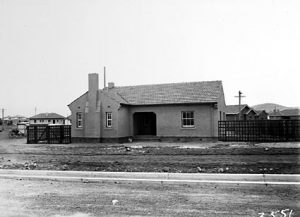
This week Tony shares his tips for building a new house in an old suburb.
Q: What are the rules if I am thinking of doing a knockdown rebuild?
TT: Do you want to do a dual or triple occupancy?
Q: Can’t I get better value by building more than one house on the site?
TT: That depends; what blocks have you been looking at?
Q: What difference does that make?
TT: Not counting the fairly rare blocks zones set aside for much higher density there are two predominant types of suburban land, RZ1 and RZ2. In addition, however, there are now also another 1000-ish blocks available because of the Mr Fluffy disaster and they all have different rules.
Q: How do I choose?
TT: Well just forget about RZ1, which are the most common by far. In about 2004, the government mandated a significant change to Canberra suburban lifestyle that all but euthanised all these blocks by prohibiting unit-titling them. The government seems more interested in developing prime new land and selling that off rather than increasing density in what is one of the most spread-out cities in the world. On the face of it the Mr Fluffy, or more technically called “surrendered” blocks, would seem to offer the best option for designing more than one house.
Q: If the government has zoned the “Mr Fluffy” blocks for increased numbers of dwellings, why isn’t everyone falling over themselves to build more than one house on these sites?
TT: The rules around the surrendered blocks are like the curate’s egg; a mix of good and bad. In my opinion they represent a significant lost opportunity to explore new housing types. I know of a good example where a two-storey house was demolished on a “Fluffy” block. The owner wanted to build two houses with one behind the other. She wanted to have good separation between the houses, respond to a reserve to the rear of the land and to optimise solar orientation. The new rules for these surrendered blocks were intended to allow for higher density but bizarrely siting one house behind the other, which seemed the obvious solution, only allows the use of 35 per cent of your block. If you were to build a single dwelling only, you can use a 50 per cent block ratio.
Q: That seems weird and contradictory. What is the logic?
TT: It seems to be a political decision to keep the inner suburbs as they are for time immemorial. If the privileged classes feel a fever coming on, the government sneezes.
Q: Are there any other tricks for new players with the surrendered blocks?
TT: There are quite a few others, which I can deal with in another column, but a particularly baffling one is that if you do adopt the “one house behind the other scenario, you have to ensure both houses are single storey and the rear one 17.5 per cent plot ratio. This applies even if the house that was knocked down was originally two storeys and all neighbours two storeys also. Very strange.
Q: That just doesn’t seem to make sense.
TT: Yep, go figure. Someone probably needs to put these questions to the planning committee in the assembly because the rules are so limiting as to be virtually unworkable and uneconomic.
Q: How do I find out more?
TT: Speak to ACT Planning and Land Authority or an experienced residential architect.
Tony Trobe is director of the local practice TT Architecture. Is there a planning or design issue in Canberra you’d like to discuss? Email tonytrobe@ttarchitecture.com.au
Published in AllHomes 28 Jan 17


